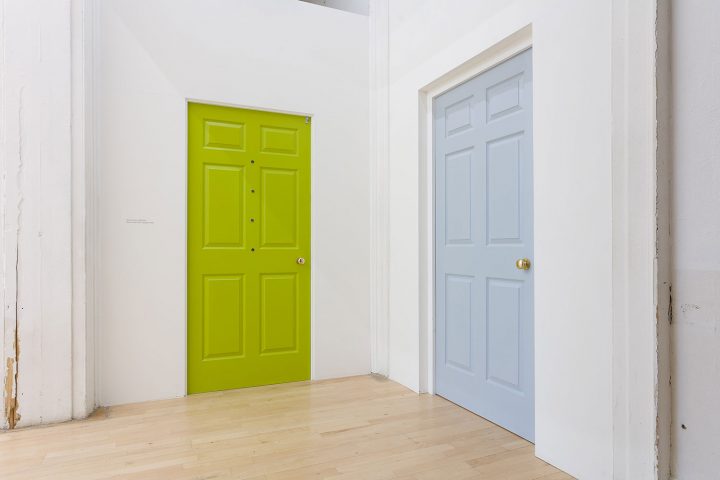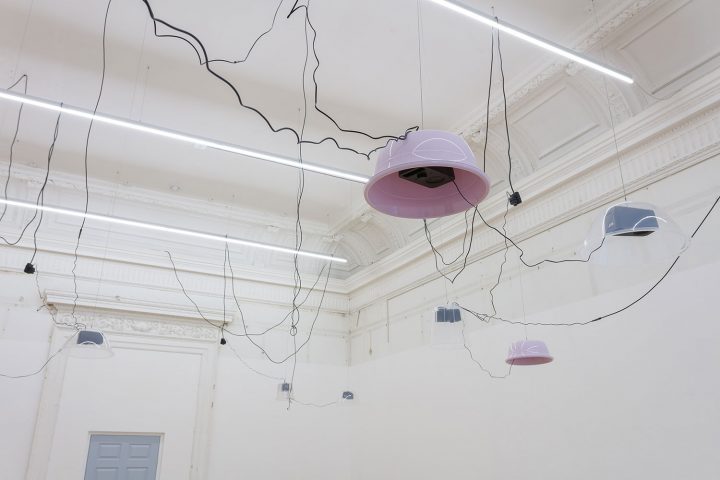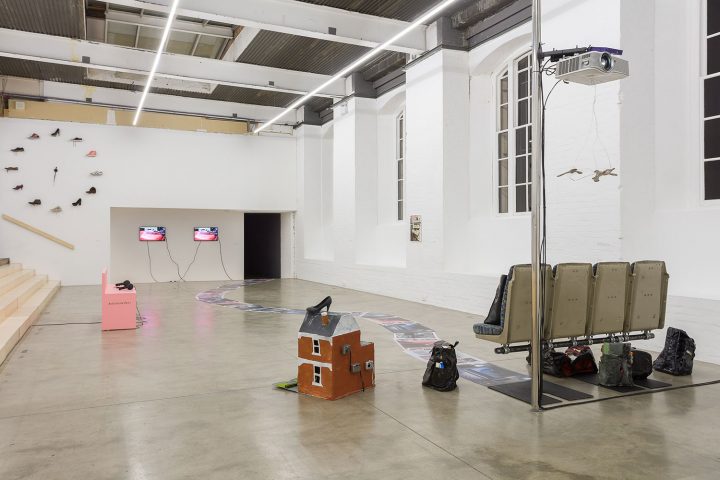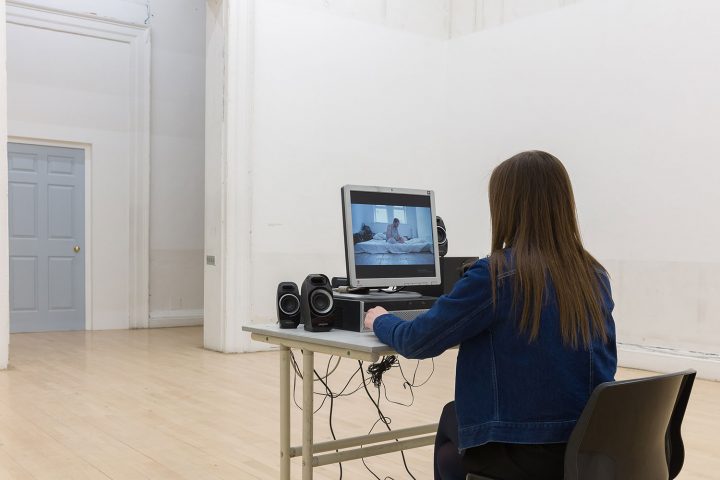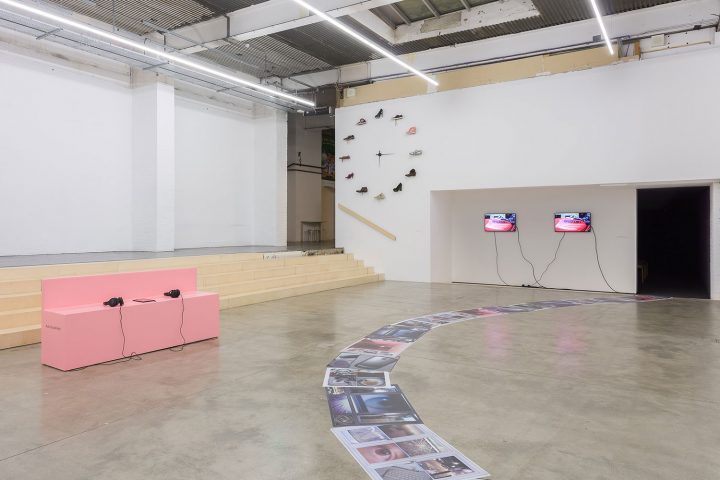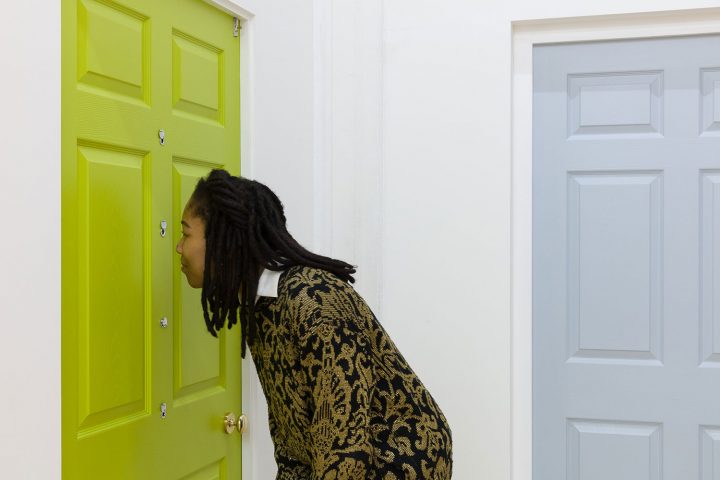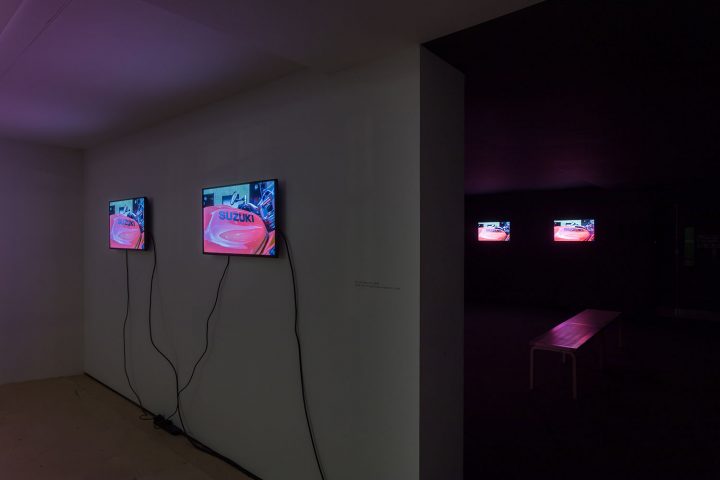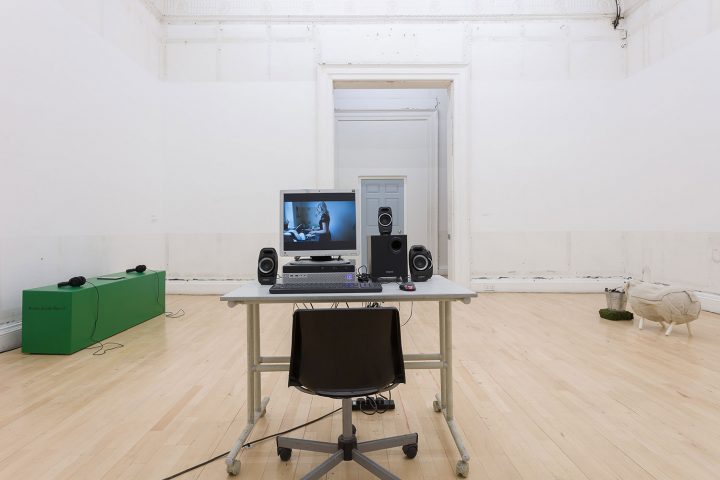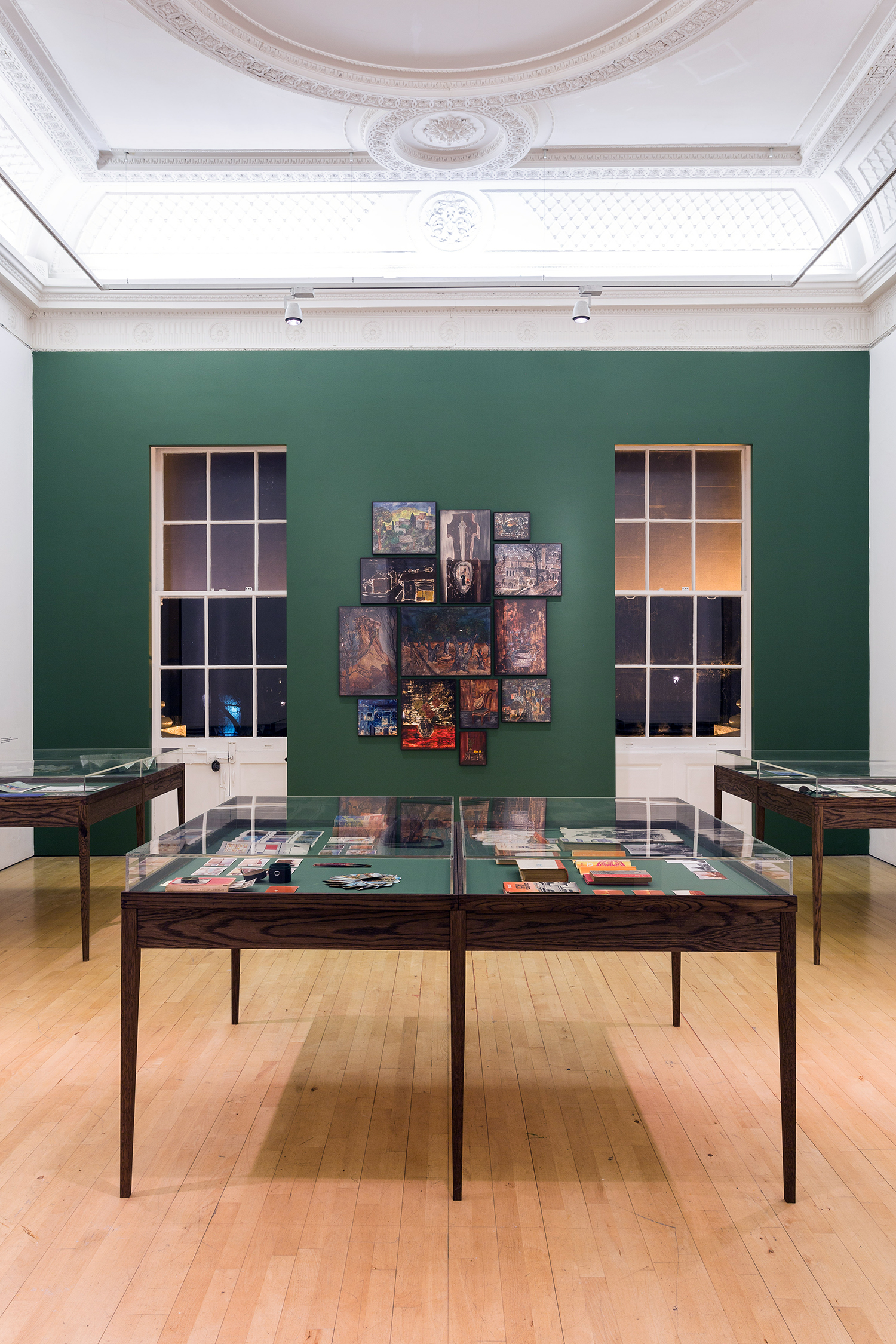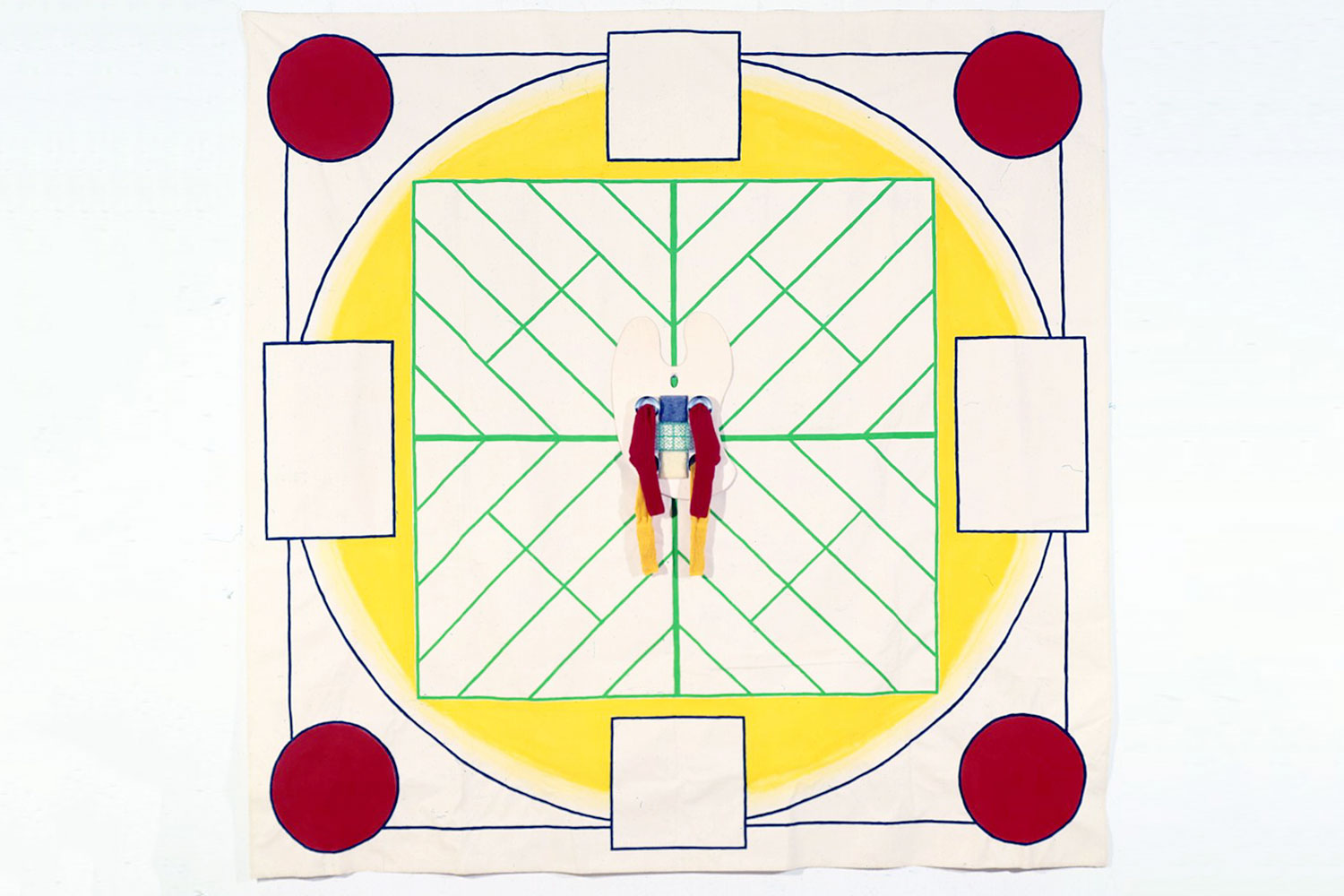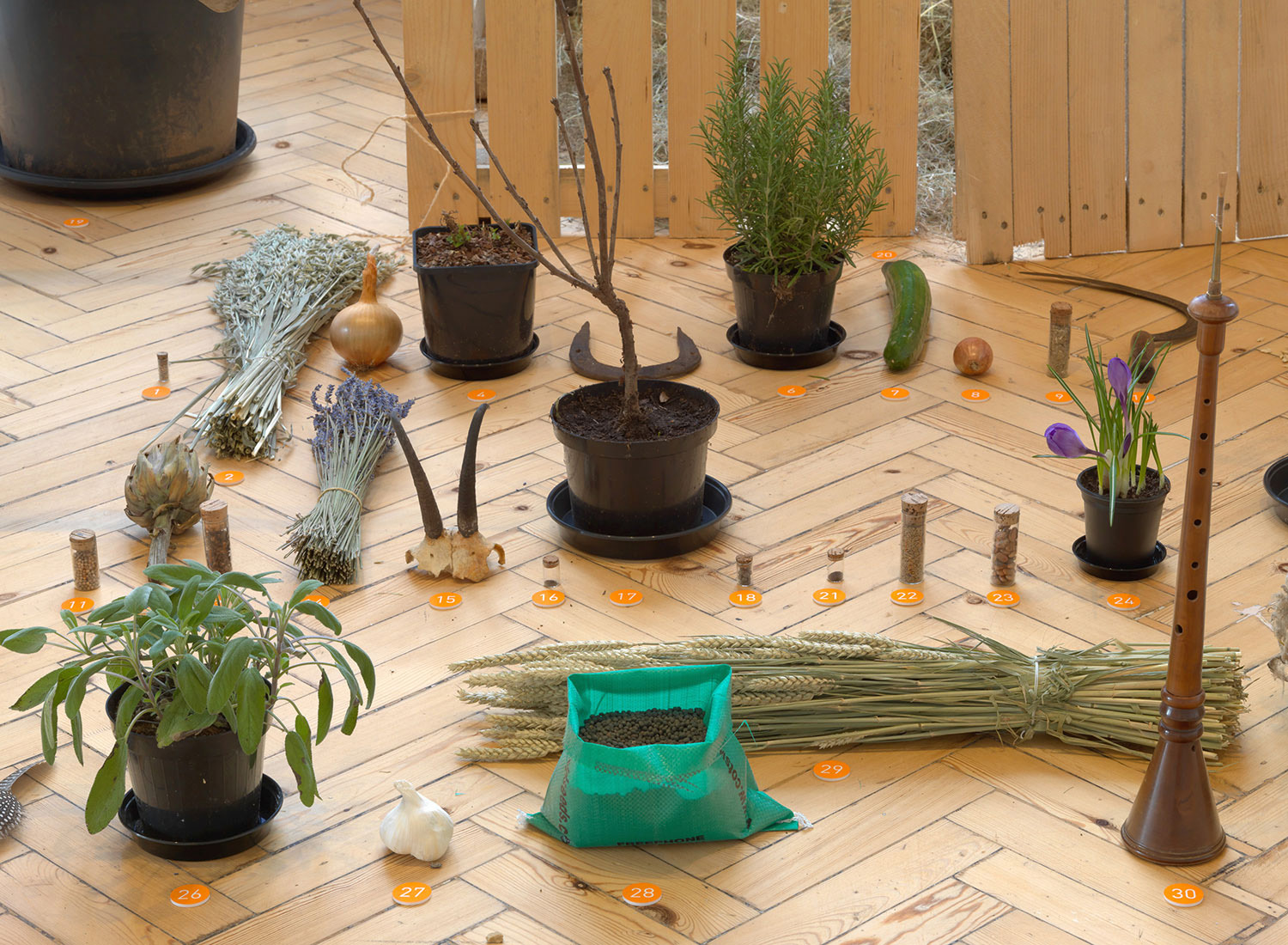Morag Keil’s practice is ouroboric: self-referring, self-erasing, self-consuming, regurgitating. Glazed duffel bags and rucksacks slump like prolapsed black guts: damp, greased, their innards a mangy mount of various concealers, foundations, papers, coffee cups, plastic bottles. They sit alongside a row of old tube seats, turned against a rollicking, low-fi recording of careering movements in a shopping center, the lenses swerving corners, as though hunting an elusive target. The shuddering recording, as the backdrop to the bedraggled bags, is reminiscent of transitive moments on public transport, where gaggles of adolescent spirits spruce-up with cosmetics; I know these bags, this matter of thick foundation applied like spackle to the face, and a backseat chapped kiss. More so, the constant surveillance of private ritual, private moment, teased out by necessity into public space.
Keil’s installations have the bald efficiency of something bargain-bucket but workable. Tacky and scabby but made fashion. This amateurish construction — of clunky papier-mâché houses downtrodden with office heels, of a low-fi camera’s glitchy rove over motorbikes — actualizes her reflection of contemporaneity’s squashing and conditioning of subjectivity, as well as the interlocking of production and pleasure.
Beneath the watermark of professionalism and propriety lies a cesspit of personal contradictions and anxiety-trimmed mediations. In smoother tessellations of the prickly, truculent real with the insipid simulation that makes up life, Controllers (2019) and Shopping (2019) realize a more cohesive vacuum. Through the peephole of a locked door in Controllers, one glimpses Alexa’s blue halo, the feminized bot treated zoological, evidently carceral. Through the blue door, Shopping recreates a sound-zoning system originally experienced at the Hayward Gallery’s 2008–09 Warhol retrospective. Low-budget in realization, wires connect speakers placed into bowls hung from the ceiling, below each bowl a kind of audio suckering, an acoustic vortex of technopsychedelic scrappiness: from advertising to video games — the pools and pockets of audio that would bubble out of those local department stores now bust.
Keil’s paintings relieve the aestheticizing cliché of post-financial crash, millennial precarity, reinstating solitude to spaces jerry-rigged into mini arenas of production. As Keil notes in the accompanying leaflet and audio guide, they house: “the romance of those personal actions — staying at home and building something alone, or masturbating.” The paintings are rudimentary views of eyes, laptops, and their reflections, or laptops-as-reflections, paintings of reflections looking at their own reflection. In the spiral of the everyday, the loop rotates, agitates, eats itself, and in the dearth of the twist, like doddering rubber ducks wheeled out for the local funfair, you crave the hook to scoop the target.

